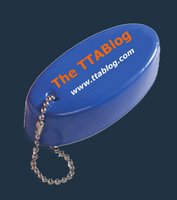TTAB Affirms Section 2(c) Refusal of TRUMPINOCCHIO for Shirts due to lack of Consent by ... Guess Who?
In an opinion of a mere seven pages, the Board upheld a Section 2(c) refusal to register the proposed mark TRUMPINOCCHIO for “Bumper stickers; Cards, namely, greeting cards, note cards, business cards; Posters, Cups; Dishes, Caps being headwear; Hats; Jackets; Shirts," on the ground that the mark comprises the name of former President Trump without his written consent. This appeal had been suspended pending the outcome of the TRUMP TOO SMALL appeal (Vidal v. Elster). In re Richard Zajkowski, Serial No. 87554778 (July 29, 2024) [not precedential] (Opinion by Judge Karen S. Kuhlke).
Zajkowski argued that his proposed mark is a protected parody and so the statutory refusal was unconstitutional under the First Amendment. The Elster decision put paid to that argument.
The constitutional challenge to Section 2(c) as an impermissible restriction on the right to free speech is squarely addressed and rejected by the U.S. Supreme Court in Vidal v. Elster, 602 U.S. 286 (2024) . . . . In that decision, the Court held that “the names clause in § 1052(c), does not violate the First Amendment.” Id. at 289. In view thereof, Applicant’s First Amendment challenge is no longer viable . . . .
Zajkowski conceded that TRUMP "obviously" refers to the former President, and the evidence supported this finding. Based on the strong association of the word TRUMP with Donald Trump the Examining Attorney Kapil K. Bhanot concluded that in the absence of written consent the application must be refused under Section 2(c). Zajkowski contended that "no reasonable person would assume a business association between Donald J. Trump and TRUMPINOCCHIO."
Section 2(c) has been interpreted to mean that when a name appears in a proposed mark, the written consent of the person with that name must be supplied where: (1) the public would reasonably assume a connection between the individual and the goods or services because the individual is so well known; or (2) the individual is publicly connected with the business in which the mark is used. (emphasis added).
Here, the evidence showed former President Trump is extremely well known, not only because of his political office but also because of his prior celebrity. Consequently, "there is no question that the public would view the name in question as the name of a particular living individual." "Thus, the necessary connection for purposes of Section 2(c) exists."
Read comments and post your comment here.
TTABlogger comment: Is there something about the word PINNOCHIO that ties the mark to Mr. Trump?
Text Copyright John L. Welch 2024.
















































